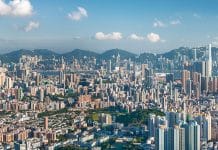Yesterday, 11 May 2022, Bank Negara Malaysia unexpectedly raised its benchmark interest rate from an historic low, to cool inflationary pressures as the country continues to recover from the Great Lockdown. BNM raised its overnight policy rate to 2 per cent from a record low of 1.75 per cent where it has been since July 2020.
The following questions are emerging in the debate: Is this good or bad for the economy? Did this happen too early or too late? Is the increase enough or not? For a higher degree of understanding, the Center for Market Education (CME) invites a broader reflection on inflation and on the role of interest rates and monetary policy in general.
“First of all, it is necessary to clarify what inflation is and what it is not”, stressed Dr Carmelo Ferlito, CEO of the Center for Market Education. “Recalling what taught by economists such as F.A. Hayek, Milton Friedman, and Armen Alchian – continued Dr Ferlito – we must distinguish a one-time jump in most prices without a continuing rise (which is not inflation), from inflation in its appropriate meaning, which usually means a continuing general rise in most prices. The difference is important because they are caused by different events”.
Dr Ferlito explained that “the second can be caused by demand pressures or supply-chain shocks (wars, drought…); these events usually are temporary. However – Dr Ferlito continued – the necessary and sufficient condition for a persisting, increasing-price level is that the quantity of money is increasing relative to the stock of real goods and services. That and only that is the source of persisting inflation”.
Inflation is thus a monetary phenomenon and there are price increases that are not inflation. Why is it believed that increasing the interest rate can help prices to cool down? In simple terms, higher interest rates are expected to discourage private investments and consumption. In this way, the amount of money in circulation is reduced and therefore inflation is expected to recede. The opposite happens when, during a depression, interest rates are lowered in an attempt to revive both investments and consumption.
It makes sense to believe that a higher interest rate can discourage spending and investments. But nothing is so automatic in the economic world: otherwise “fixing the economy” would be an easy task. But this is only one part of the story. First of all, there is a time lag between the decisive moment and when the effects are produced. This means that, when the monetary policy shows its effects, we may be in a different economic momentum.
There is more. What is the main determinant of investments? Profit expectations. Interest rate is only one element entering the formation of those expectations (as a higher cost of borrowing). But, if entrepreneurs are optimistic about the economic momentum, they may not be discouraged by rising interest rates. The same happens when interest rates are lowered: if pessimism prevails in the investors’ community, no matter how low-interest rates are, investments will not happen.
Therefore, an interest rate hike has to be seen not as a mechanical tool, but as a signal launched to the market: its consequences will depend on how market players interpret that signal.
From the consumer’s side, instead, an increase in the interest rate is expected to discourage spending and encourage saving. Again, this is not untrue, but it depends on how that signal will be interpreted. For example, in presence of high inflation like now in the US, consumers may expect the deterioration of their purchasing power to continue. This means that they will keep on spending because they see saving as just time wasted as the currency is losing value. Therefore, better to get rid of it. They will reduce their spending if they will expect that policy to be successful in tackling inflation.
“An additional clarification needs to be done on the interest rate”, Dr Ferlito added. “The interest rate is – as all prices – a signal and economic agents take decisions based on how they interpret that signal. But, when the interest rate is fixed by the monetary authority, we are not in the presence of a market price; rather, it is a ‘political price’. This means that economic decisions are taken not based on the interaction between supply and demand (whereby supply is represented by savers and demand by investors); instead, investment choices are made on the basis of what the people leading a Central Bank believe to be the ‘appropriate’ interest rate for the economic system”. This can lead to bad investments and financial instability within a boom-and-bust cycle (as it happened with the Great Recession).
In conclusion, what we observed in the past years is a choice of bad policy decisions and BNM recent move is an attempt to address the issues created by those choices:
- Lockdowns generated a recession.
- Expansive fiscal and monetary policies were implemented to try to fight the recession.
- That policies made the quantity of money grow faster than the output, generating inflation.
- BNM now tries to address inflation.
We can say that decisions were made to break eggs without thinking that, once broken, eggs are difficult to put back together.
Will BNM move be effective? It depends. Due to the quantity of money in circulation, such a move was somehow inevitable and it only came earlier than expected. But a contractionary effect has to be expected. The strength of such a contractionary effect will depend on the psychological effect of the interest rate increase on entrepreneurial “animal spirits”: how much that impact will offset post-Covid positive profit expectations? This can only be said ex-post and it depends also on extra-economic factors like the political environment and the international scenario.
In addressing inflation, the Center for Market Education would have preferred to see the political will to cut government spending (as suggested by James Buchanan) rather than the interest rate increase. In fact, while we started to urge to address inflation more than one year ago, the money withdrawal from the economic system needs to be the least contractionary possible way. In this regard, for putting the economic recovery path on sound pillars, we need more private investments – which are based on market signals and may be discouraged by the tightening of monetary policy – than government spending – which is based on borrowing and the money printing press, and therefore strongly inflationary.
Finally, for investment decisions to be more holistically based on true market signals, the power of the Central Bank to fix the interest rate, in the pretense of being able to fix the economy as if it was a mechanical engine, should be abolished, and we should instead leave the determination of the interest rate to market forces.









